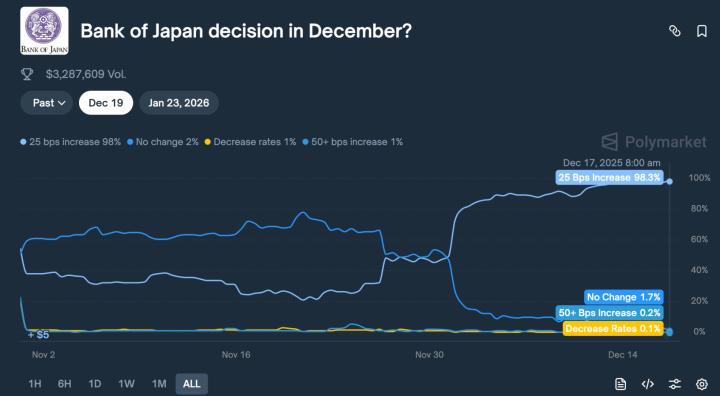In early March, the cryptocurrency market seemed to have entered the "crypto observation elevator" personally served by Trump, experiencing a sudden surge and weightlessness. From the "strategic reserve plan" to the rumor of "zero capital gains tax", to the plunge caused by the tariff policy, the market has been oscillating between hope and despair.
The first White House Cryptocurrency Summit, which is scheduled to be held on March 8, is seen as a key node in determining the short-term fate of the market.
How will Trump's policy moves, the Federal Reserve's monetary policy, and the US government's debt issues affect the market after the crypto summit?
I. Trump's "Crypto Policy Combination Punch": The Collision of Idealism and the Constitutional Iron Wall
1. Zero Capital Gains Tax: A Power Game Between the President and Congress
On March 4, Mike Alfred, the founder of the digital asset investment platform Eaglebrook, revealed on social media that the Trump administration plans to announce the exemption of cryptocurrency sales from capital gains tax at the summit. The news caused a brief market frenzy, but was soon met with a rebuke from legal experts. Adam Cochran, a partner at Cinneamhain Ventures, bluntly stated that "the president has no unilateral power to amend tax laws, which is a power granted to Congress by the Constitution. Even if Trump signs an executive order, its effect is equivalent to declaring himself a cupcake."
Key Contradiction: Low Possibility of Policy Implementation. Amending US tax law requires Congressional approval, and the Democratic-controlled Senate is likely to block such a proposal.
Short-term Emotional Hype: Although the legal obstacles are obvious, the market may still view the "policy vision" as a positive, driving speculative buying. For example, after Trump previously announced the inclusion of 5 cryptocurrencies in the national strategic reserve, the related cryptocurrencies surged more than 10% in a single day, with a market capitalization increase of $300 billion, although the gains were given back the next day due to the tariff policy.
2. Strategic Reserve Plan: National Endorsement vs. Asset Bubble Risk
Trump's "Cryptocurrency Strategic Reserve" is seen as a landmark move by the US to seize the lead in the crypto field. The first batch of BTC, ETH, XRP, SOL, and ADA included in the reserve have surged, but the market soon realized:
Selective Support Causes Controversy: Some of the projects on the reserve list (such as XRP and SOL) lack the decentralized characteristics of Bitcoin, and are more like political backing of specific technologies.
Liquidity Siphoning Effect: If the US Treasury Department purchases cryptocurrencies through the Exchange Stabilization Fund, it may squeeze the investment space of retail and institutional investors, raising concerns about "state-owned control".
II. The Market Script After the Summit: Four Potential Directions
1. "Pie in the Sky Frenzy": Zero Tax Rate Ignites FOMO Sentiment
Assumption: Trump will publicly promise to push for a tax-free policy at the summit and release more regulatory easing signals (such as relaxing ETF approvals). The market will respond positively with a short-term surge, and retail and institutional investors may flood into the market, with BTC potentially breaking through the $100,000 mark, and Meme coins and AI concept coins following the trend.
Risk Awareness: The possibility of policy implementation is highly uncertain, and if the Congress rejects the proposal, the market will face a cliff-like plunge due to "unmet expectations", similar to the 9% single-day Bitcoin crash on March 4.
2. "Pragmatic Positive": Clarification of Regulatory Framework Replaces Tax-Free Gimmicks
Assumption: The summit will focus on formulating clear regulatory rules (such as stablecoin issuance standards and exchange compliance guidelines), rather than empty slogans.
Institutional Capital Inflow: Transparent regulation will attract traditional financial institutions to increase their allocations, as banks and sovereign wealth funds have already begun to increase their holdings of cryptocurrency ETFs.
Value Coin Differentiation: Mainstream coins like BTC and ETH will benefit from long-term confidence boost, while altcoins lacking real use cases may continue to sink.
3. "Black Swan Raid": Fed Rate Hikes + Debt Crisis Double Whammy
Fed Policy Shift: If Trump's tariff policy drives up inflation, the Fed may be forced to maintain high interest rates, suppressing cryptocurrency market liquidity.
Debt Bomb Explosion: US federal debt has surpassed $40 trillion, and the high-interest rate environment exacerbates debt repayment pressure. If the market loses confidence in the US dollar's creditworthiness, the "digital gold" narrative of Bitcoin may regain dominance, driving safe-haven buying.
4. "Family Interest Scandal": Trump-Related Project Manipulation Triggers Trust Crisis
The Trump family has been repeatedly exposed to have interest associations with cryptocurrency projects. For example:
World Liberty Financial: A DeFi project associated with the Trump family bought thousands of millions of dollars worth of ETH after the Ethereum crash, accused of insider trading.
Meme Coins: The $TRUMP and $MELANIA coins issued by the Trump couple have already dropped 80% in two months, and the spotlight is just a facade covering the crypto skeletons.
Celebration or Trap? The "Final Lesson" for Retail Investors
Trump's crypto policy is like his business reality show routine: first the "crypto reserve pie" to attract traffic, then the tax-free policy to create buzz, but the real director is the constitutional iron wall and the debt crisis. For retail investors, the biggest revelation of the summit may be: in the game between policy and the market, the only unchanging truth is "don't believe everything you hear". Keep your wallet closed and wait for Congress and the Fed to reveal their bottom cards, which may be more in line with the way to survive than blindly chasing the "Trump market".







